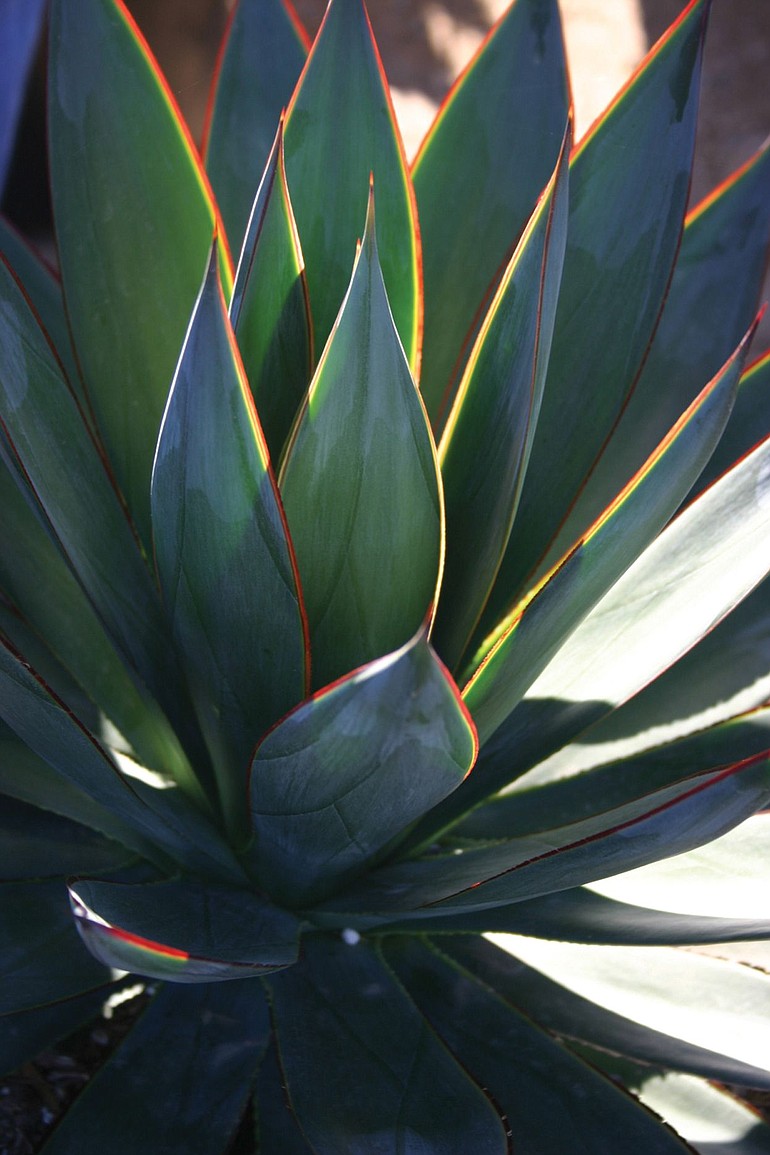The size of the pot will dictate the quantity and variety of the plants. The larger the container, the higher the cost and the heavier the weight, but the greater the payoff in pleasure and display.
Container gardeners talk about grouping plants as thrillers, fillers and spillers. Thrillers are used sparingly as accent plants, valued for their form and height. Spillers drape over the lip of the pot to soften its edge and provide depth. Fillers occupy the spaces in between.
Here are some of my favorite building blocks for the contained succulent garden.
• Thrillers: Agaves, with their fleshy whorls of leaves and striking architecture, provide dependable thriller material. The largest varieties need containers all to themselves, but smaller versions are obvious choices as the centerpiece of container combinations. Aloes have similar forms, though they tend to be fleshier than agaves, a little thirstier, more translucent and with teeth along the length of their leaves. Aloes also send up tubular red blooms on wiry stems, though the real beauty of succulents is in the color, form and texture of their bizarre foliage, an ornament that lasts far longer than the blooms.
Echeverias have conspicuous leaf rosettes held aloft on stems, making them good bets as thrillers. Aeoniums have plump, ground-hugging rosettes in particularly eye-catching colors, making them natural-born thrillers.



